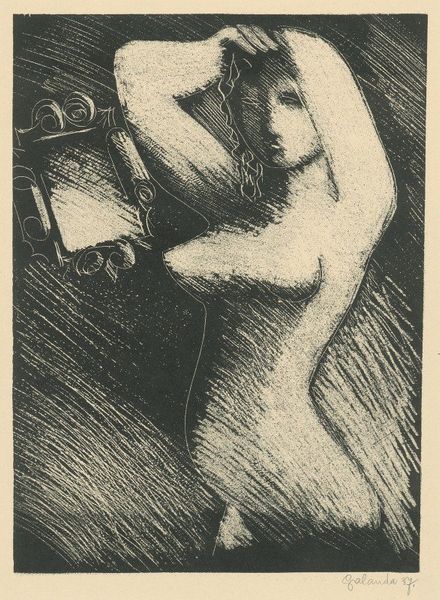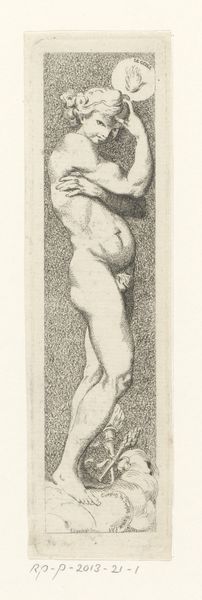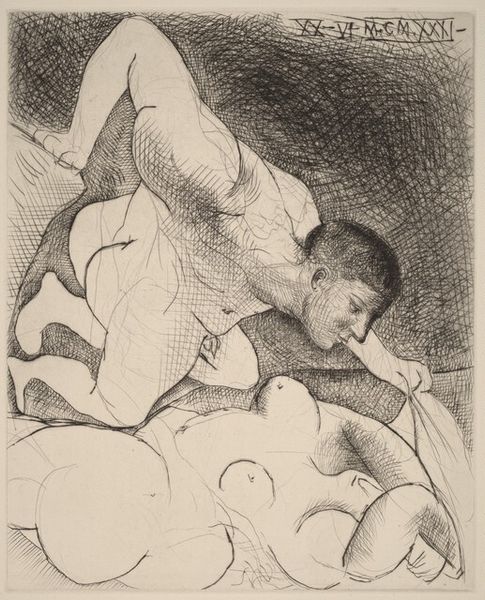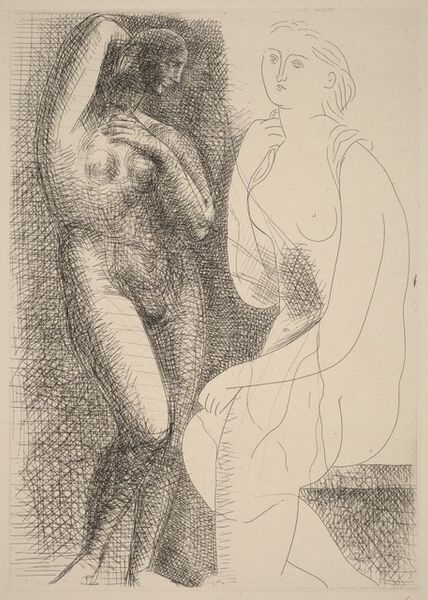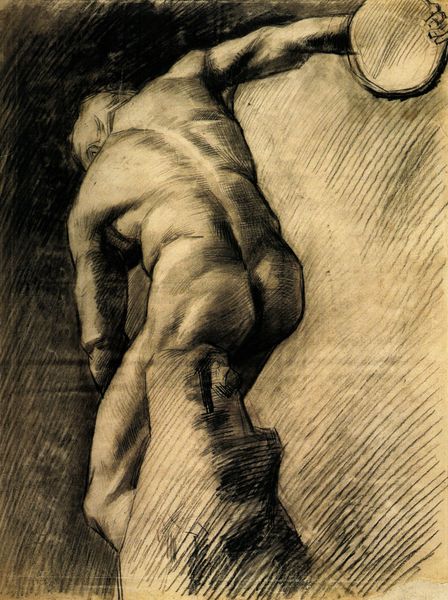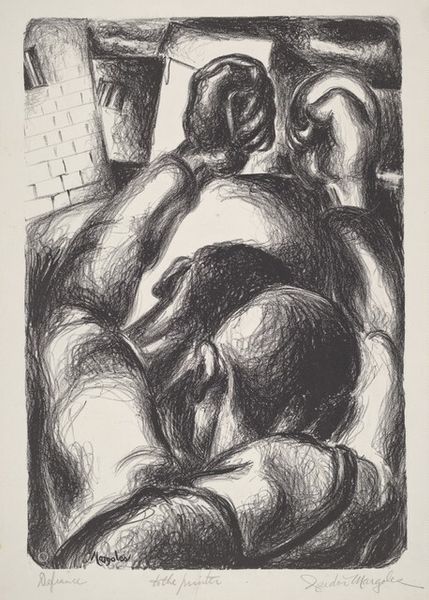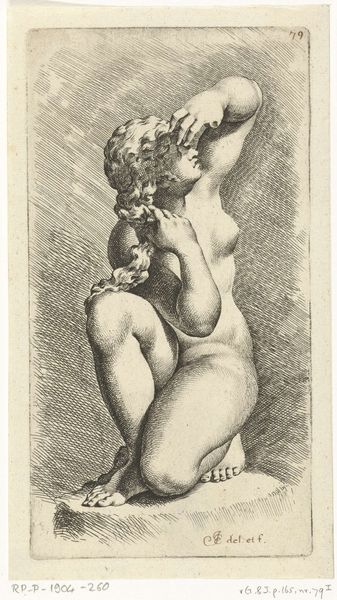
print, etching, intaglio
#
portrait
# print
#
etching
#
intaglio
#
figuration
#
nude
Copyright: National Gallery of Art: CC0 1.0
Marcel Gromaire created "Nude with Raised Arm" as an etching, a printmaking technique, in 1933. The image presents us with a female nude in an interior setting, a subject of enduring interest for artists. Gromaire lived through a period of major upheaval in the conventions of art. Looking at this image, we might ask how the female nude was made to carry different social and cultural meanings. In France, from the late 19th century onwards, art institutions such as the École des Beaux-Arts taught artists to depict the human figure in a way that was seen as both natural and ideal. Yet artists like Gromaire, while still engaging with classical subjects, questioned these established norms. He did so by simplifying forms, using bold lines, and showing an interest in the everyday rather than the ideal. The historian can use these visual clues, along with documents, manifestos, and other archival resources, to see how the image creates meaning in its specific time and place.
Comments
No comments
Be the first to comment and join the conversation on the ultimate creative platform.
